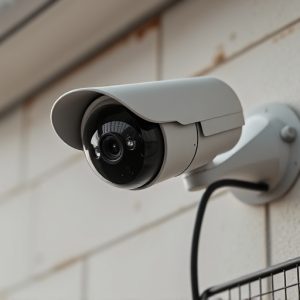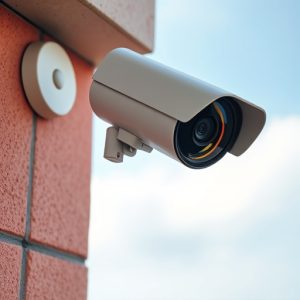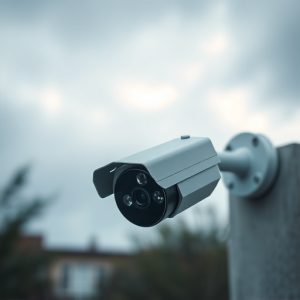Optimize Dummy Surveillance Camera Placement for Maximum Deterrence
Fake CCTV cameras, when strategically placed and maintained, significantly enhance security deterren…….
Fake CCTV cameras, when strategically placed and maintained, significantly enhance security deterrence. Their effectiveness lies in visibility, realism, and placement near entry points, while blending with the environment through signs or stickers. Avoid common mistakes like obvious hiding or fixed positions to maintain surprise and maximize their deterrent impact against potential thieves, making them a valuable component of any comprehensive security strategy.
Deterring crime in your home or business has never been easier with dummy surveillance camera placement. While real cameras offer significant protection, fake CCTV can be a powerful deterrent in its own right. This article explores the science behind fake CCTV’s effectiveness and provides essential tips for optimal placement.
We’ll delve into key considerations, best practices, and common mistakes to avoid, ensuring you maximize the deterrence factor without breaking the bank.
- Understanding Fake CCTV Camera Deterrent Effectiveness
- Key Considerations for Optimal Dummy Camera Placement
- Best Practices and Common Mistakes to Avoid
Understanding Fake CCTV Camera Deterrent Effectiveness
Fake CCTV Camera Deterrent Effectiveness has been a topic of interest for both security professionals and the general public. While real CCTV cameras have proven to be effective deterrents against crime, the impact of dummy or fake cameras is often questioned. Research suggests that strategically placed fake CCTV cameras can significantly reduce criminal activity in certain areas. However, their effectiveness varies based on factors like visibility, placement, and the level of realism.
When considering the deterrent effect, it’s crucial to understand that while fake cameras can create a sense of surveillance, they are most effective when combined with other security measures. Well-lit areas, clear signage indicating camera presence, and regular security patrols often enhance the overall deterrence provided by dummy cameras. By itself, a fake CCTV camera might only cause temporary hesitation in potential criminals, but it can be part of a comprehensive strategy to create a safer environment.
Key Considerations for Optimal Dummy Camera Placement
When strategically placing dummy surveillance cameras, several key considerations come into play to maximize their deterrent effectiveness. The primary goal is to create an illusion of advanced security monitoring, which can significantly deter potential criminals. One crucial aspect is positioning; mounting the fake cameras in prominent, well-lit areas visible from various angles can provide a powerful psychological impact. This might include placing them near entry points, such as front doors or windows, where intruders are most likely to be observed.
Additionally, ensuring the dummy cameras resemble authentic CCTV equipment is essential. Using realistic replicas with functional-looking features like lenses and cables helps deceive would-be thieves. The placement should also consider the surrounding environment; for instance, positioning them near signs or stickers indicating the presence of surveillance can reinforce the deterrent message without actually having to display a real camera. This clever use of dummy cameras can serve as an effective first line of defense in enhancing home or business security while potentially reducing the need for more extensive and costly physical security measures.
Best Practices and Common Mistakes to Avoid
Best Practices and Common Mistakes to Avoid
When placing dummy surveillance cameras, or fake CCTV, it’s crucial to balance deterrence with strategic positioning. The best practice is to mimic real camera locations, mounting them at eye level and in plain sight. Positioning them near high-value assets or entry points sends a clear message of security awareness. However, avoid over-saturating an area; too many fake cameras might reduce their deterrent effect and create a false sense of security.
Common mistakes to steer clear of include placing them in obvious hiding spots or in a way that obstructs the view—the point is to deceive potential intruders, not provide them with a clear roadmap. Another pitfall is neglecting to update their placement periodically; criminals adapt to static camera locations. Regularly changing positions ensures continued effectiveness as a deterrent and can help maintain the element of surprise. Remember, an effective fake CCTV setup should blend realism while keeping would-be thieves guessing.
While fake CCTV camera deterrents may not provide the same level of security as real cameras, strategically placing them can significantly enhance safety. By understanding their effectiveness and considering key factors like visibility, positioning, and consistency, property owners and managers can create an illusion of surveillance that acts as a powerful deterrent to potential criminals. Adhering to best practices and avoiding common mistakes ensures these decoys maximize their impact, contributing to a safer environment.


